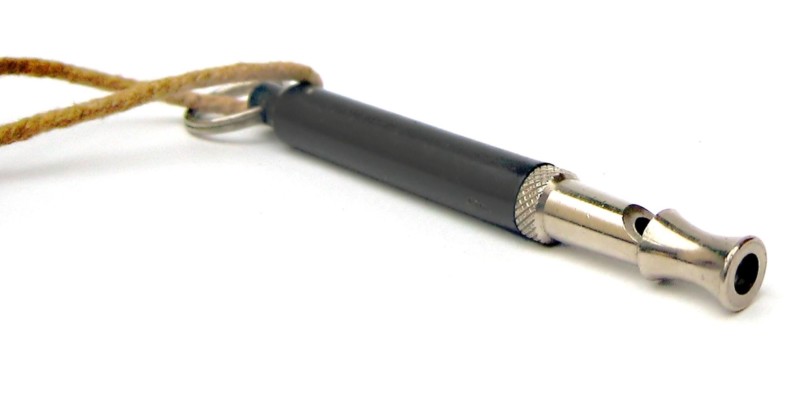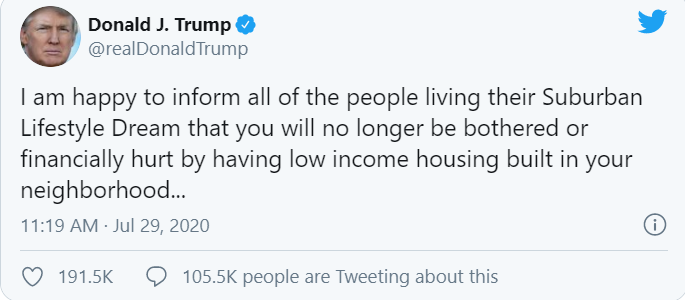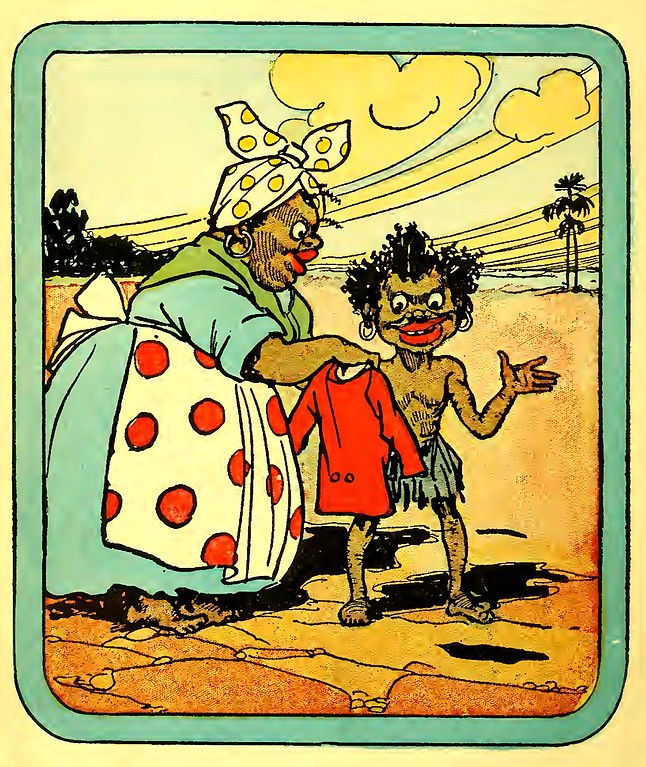Dog-whistling: Being racist without the baggage

I’m going to start this blog on dog-whistling with the same quote that just about every other blog and article on racist dog-whistling starts with. This is Lee Atwater, the Republican Party strategist famous for being the brains behind Nixon’s Southern Strategy:
You start out in 1954 by saying, “Nigger, nigger, nigger.” By 1968, you can’t say “nigger” – that hurts you. Backfires. So you say stuff like forced busing, states’ rights and all that stuff. You’re getting so abstract now, you’re talking about cutting taxes. And all these things you’re talking about are totally economic things and a byproduct of them is [that] blacks get hurt worse than whites. And subconsciously maybe that is part of it. I’m not saying that. But I’m saying that if it is getting that abstract, and that coded, that we are doing away with the racial problem one way or the other. You follow me – because obviously sitting around saying, “We want to cut this,” is much more abstract than even the busing thing, and a hell of a lot more abstract than “Nigger, nigger.”
What Lee Atwater is describing is dog-whistling. Dog-whistling is using terminology that only a certain audience can understand the true meaning of, named after whistles used in sheepherding that only sheep dogs could hear. We’re going to go through some recent examples of dog-whistling, but it’s important to approach this topic with full honesty, so I’ll start with a sort of disclaimer below before we get into examples.
A very typical accusation, most recently from the far-right, is that “the left” likes to find a Nazi in everyone, that everything is a dog-whistle and that this anti-Nazi paranoia is leading to a more and more accusatory political climate that is ridding the political spectrum of any middle ground between outright fascists and tankies.
I will fully admit, this is a fair point in some cases. I recall a recent example where someone with a pretty good reputation in my field made a videogame that was meant to help educate kids on the basics of information security. Unfortunately, he chose the antagonist to be a rat with a vaguely “Jewish sounding” name, drawing the ire of some of the more… sensitive members of the community to accuse him of using the antagonist as an antisemitic dog-whistle. I thought the whole thing was incredibly over the top and performative, but a dear friend explained to me that rats were a common antisemitic symbol to depict Jews in a negative light. I understood where the sentiment came from (but still preserve that a fair bit of the outrage was largely performative) but thought that the accusations of dog-whistling were a step too far, considering the person’s past good behavior.
Anywho, on to some examples.
Trump’s Infamous ‘Low-income housing’ Dogwhistle

If you’re the type that gets angry about pointing out Trump’s dogwhistles, this post probably isn’t for you.
On 29 July 2020, President Donald Trump tweeted:
“I am happy to inform all of the people living their Suburban Lifestyle Dream that you will no longer be bothered or financially hurt by having low income housing built in your neighborhood…Your housing prices will go up based on the market, and crime will go down. I have rescinded the Obama-Biden AFFH Rule. Enjoy!”
Predictably, this was Trump furthering his tactic of repealing as much of Obama’s legacy as humanly possible, regardless of the cost to the average American, but the speech within the tweets are incredibly obvious dog-whistles, and relatively common ones at that.
We can start with the language hearkening back to “white purity” symbology of the pre-civil rights era and the associated terminology from Nazi ideology. A common tactic used by segregationists and white supremacists was not only demonizing and dehumanizing people of color, but upholding white people’s purity as a dividing factor between the two races. This tended to appear in the heavily used depiction of the black man as a rabid rapist out to destroy the beautiful purity of the white girl… terminology that sounds eerily similar to Trump’s description of Mexican migrants not too long ago. The usage of “Suburban Lifestyle Dream” depicting the perfect white suburb, the dream of every white family, “unbothered” by the scourge of the less pure “low income housing.” This is a dog-whistle essentially implying that whites don’t have to worry about the government making it easier (by providing further upward economic mobility) for blacks to move into their neighborhoods or for cities to provide affordable housing near white suburbia.
How does race tie in to the equation? “Affordable housing” is typically used to represent low-income people of color, as demographically suburbs are predominantly white and inner city areas and affordable housing are predominately black or Latinx. White flight as it plagues many cities across the US and other countries is one side of the equation, so naturally the “low-income housing” is the other side, along with its associated demographics. This is a near-perfect and very common dog-whistle. Most people hear “drop in property value due to less attractive housing units” but the real audience hears “drop in property value because the blacks are moving in.” Judging by Trump’s history in discriminatory housing practices, we can probably guess where he learned this verbiage.
Signs and Symbols on the Swag Store
While much of my work researching white supremacist groups includes noting connections between disparate groups, similarities in ideologies across different generations of white supremacists and tracking arrests and criminal records of known bad actors, a fair bit of my research has brought me into the symbology of white supremacy and Nazism. How did the Nazis end up using so much Buddhist symbology? Why is Norse symbology so common in white supremacist groups? What do these numbers commonly mean?
The study of white supremacist symbology has brought me to discover symbols like the Black Sun, swastika, lightning bolts and various Norse runes, but there are two numbers typically associated with white supremacist ideology: 14 and 88. The number 14 is a dog-whistle hearkening back to the 14 words popularized by neo-Nazi David Lane, while 88 represents the twice repeated 8th letter of the alphabet, H, short for ‘Heil Hitler.’ These are typically used in usernames on social media and white supremacist forums to identify oneself to other white supremacists, but another, possibly surprising forum found itself representing one of these numbers in a rather odd way: Trump’s swag store.
As covered by Business Insider, an official Trump merchandise store got a lot of flack for some merchandise that featured some pretty blatant dog-whistles, including a Trump-branded baseball that was being sold for $88 online. To me, this seems like an obvious one: the price on Trump merchandise is as arbitrary as it gets. Products are cheaply made and the purpose is entirely profit driven and to put out the Trump brand ahead of the election. Why $88? Why not $99? Why not $40? You’re telling me they could have picked just about any price possible and just happened to pick the incredibly common dog-whistle for ‘Heil Hitler’? The store also featured an “America first” tee with an eagle that very closely resembled the eagle donned by Hitler’s SS, ironic seeing as “America first” is a rather tongue in cheek bad-flavor-of-nationalist slogan in and of itself seeing as Hitler used very similar terminology during his rise to power.
That very same week, Facebook removed a campaign ad that used Nazi symbology associated with political prisoners in concentration camps, and Trump himself retweeted a video that, very clearly, depicted a Trump supporter yelling ‘white power’ in a well-to-do golfing community. It was a rough week that seemed to be turning dog-whistles to bullhorns, but always still there were tongue-in-cheek critiques that leftists were just being silly or malicious in seeing swatstikas on every street and tweet. To be fair, leftists have their own dog-whistles…
What Might Be the Nail in Hillary’s Coffin
Hillary Clinton herself attempted to make use of her own dog-whistle during her 2016 campaign against Donald Trump, and, in my own opinion, it might be the campaign decision that had the largest adverse effect on her already comically clumsy attempt at the presidency. According to Wikipedia, the first time Hillary used the term ‘deplorables’ was September 9, 2016, saying that half of Trump’s supporters are a racist, sexist, xenophobic “basket of deplorables.” While it’s less a dog-whistle and more of a bullhorn, the term deplorables was seen to represent the uneducated, poor non-elite of America, those without the silver spoon, typically what much of the leftist elite would refer to as trailer trash red-necks.
You can probably guess how that went.
Trump effectively mobilized his irate base to use the term ‘deplorable’ as a rallying cry. The word showed up in Twitter usernames, in group logos and more as Trump’s base saw it as a dog-whistle to refer to a sort of resistance to the elite, the very sort of populism that Donald Trump sought to drum up during his first and, seemingly, second campaign for president. If Hillary’s elitist bullhorn weren’t loud enough, Donald Trump hooked up the speaker system and cranked up the volume.
Key Takeaways
I would highly recommend everyone study up on the symbology and common dog-whistles used by white supremacists and others, and call them out when you see them. Listen to people-of-color, who are used to the myriad of ways they are ‘othered’ in common lexicon. Study what tattoos are common among members of white supremacist and neo-Nazi groups, as they are a very common way for groups to ‘tag’ members to be recognized during social functions. Things like the lightning-bolt SS, the numbers 14 or 88, Norse runes (much to my chagrin) and iron crosses are incredibly common, albeit much more explicit, symbols to identify neo-Nazis and white supremacists, whether it be in tattoos or pictures posted online.
More generally, learn to read between the lines. Don’t accept Trump’s “Suburban Dream” at face value, really think about what this means from a nationalist populist perspective, and think of what it means in the context of Trump having a very questionable history in race relations. Think about what it means for Trump to say “there are perfectly good people on both sides” in the racist and deadly Charlottesville marches, for Trump’s press secretary to say he “won’t weigh in” on white supremacist Kyle Rittenhouse’s shooting of 3 BLM protesters.
Words never have only one meaning, and regardless of the constant gaslighting, it is important to perk your ears up at the first hint of a racist dog-whistle.
